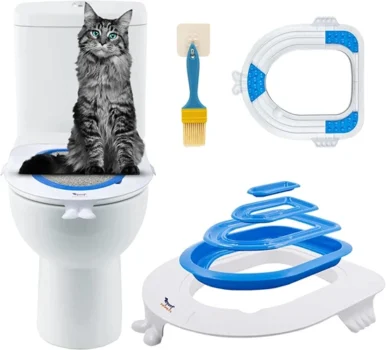Have you ever dreamed of having a cat that can use the toilet just like humans do? A feline friend that doesn’t require a litter box and can save you money on litter? If so, you may have considered toilet training your American Wirehair. While it may seem like an unusual idea at first, toilet training cats has become a popular trend in recent years. However, before you make the decision to train your cat to use the toilet, it’s essential to learn about the pros and cons of this approach, as well as the methods to follow for successful training. Let’s dive into this topic and see whether toilet training is right for you and your American Wirehair.
Pros of Toilet Training
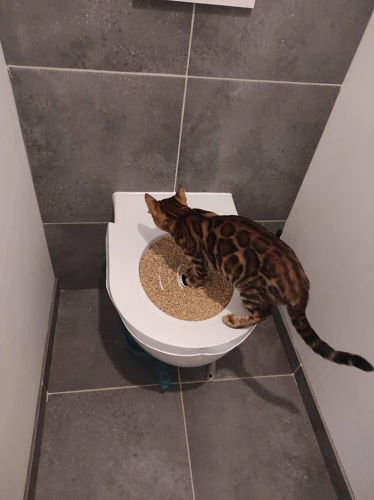
Training your American Wirehair to use the toilet can come with several benefits. Not only can it save you money on litter, but it can also eliminate the mess and odor associated with traditional litter boxes. However, toilet training your cat is not always an easy process, and it’s not for every cat. It requires patience, consistency, and dedication. Before deciding if toilet training is right for you and your American Wirehair, it’s important to weigh the pros and cons. To learn more about litter training your American Wirehair, check out our tips on American Wirehair kitten litter training.
1. Saves money on litter
Making the switch from using a litter box to toilet training your American Wirehair can have several advantages, including saving money on litter costs. With traditional litter boxes, you need to purchase litter regularly, which can add up over time. Plus, litter boxes need to be cleaned frequently, which can be a time-consuming task. By training your cat to use the toilet, you can eliminate the cost of purchasing and disposing of litter altogether.
To highlight the cost savings, let’s take a look at some numbers. According to the American Pet Products Association, the average cost of cat litter is around $165 per year. This cost can vary depending on the type of litter you purchase and the size of your cat, but it’s still a significant expense.
With toilet training, you won’t need to spend any money on litter or litter boxes. Instead, you can invest in a special toilet seat adapter designed for feline use, which can be a one-time purchase. While these adapters can be more expensive upfront, they can save you money in the long run.
Additionally, toilet training your cat means no more litter mess to clean up. This can save you time and effort in keeping your home clean. No more sweeping up litter from around the box or vacuuming tracked litter from your floors.
Of course, there are some cons to consider, such as the time it takes to train your cat and the possibility that not all cats can be successfully trained. But for many cat owners, the cost savings and convenience of toilet training outweigh the potential drawbacks.
For more information on your American Wirehair’s litter box behavior and reinforcement, check out our guide to understanding American Wirehair litter box behavior, positive reinforcement techniques for litter training, and common litter problems and solutions.
2. No litter mess
When it comes to toilet training your American Wirehair, one of the major advantages is the absence of any litter mess. By teaching your feline friend to use the toilet, you no longer have to deal with the unpleasant task of cleaning litter boxes on a daily basis. This means no more scattered litter on the floor or even on your furniture, and no more unpleasant smell lingering in the air.
Instead of constantly changing litter, you only need to flush the toilet after each use, and occasionally scrub it to keep it clean and hygienic. This not only saves you time and energy but also reduces your carbon footprint by eliminating the need for disposable litter products.
Also, toilet training your American Wirehair eliminates the need for you to find the perfect litter box that accommodates your furry friend’s preferences. Cats are known to be picky animals, and it can be quite challenging to find a litter box that your American Wirehair feels comfortable in.
However, with toilet training, you don’t have to worry about purchasing different litter boxes or experimenting with different types of litter. Your American Wirehair will learn to associate the toilet with the act of elimination, making it the only place they need to go.
Of course, as with any new behavior, toilet training your American Wirehair can take some time and patience. It’s important to establish a routine and stick to it, as well as choosing the right location for the toilet training and using positive reinforcement techniques. In case you face any issues or problems, feel free to check out our article on transitioning your American Wirehair to a new litter box, which can offer useful insights and solutions.
With toilet training, you can say goodbye to litter mess and enjoy a cleaner, more hygienic, and eco-friendlier environment for you and your American Wirehair.
3. No litter odor
One of the biggest advantages of toilet training your American Wirehair is the elimination of litter odor. With traditional litter boxes, unpleasant smells can quickly build up and spread throughout your home. This can be especially problematic in small apartments or homes with limited ventilation.
However, with toilet training, urine and feces are disposed of through the toilet which means no more cluttered litter boxes. This means no more scooping and disposing of litter clumps which can be both messy and time-consuming.
In addition to the convenience factor, toilet training your American Wirehair reduces the amount of litter and urine odors in your home. Traditional litter boxes can trap odors which may require costly litter deodorizers or frequent cleanings to eliminate.
When training your American Wirehair to use the toilet, you will only need a small amount of litter as a transition method. This means that when your American Wirehair is fully trained, you will no longer have to worry about purchasing and storing litter in your home.
Ultimately, eliminting litter odor is a big plus when considering toilet training your American Wirehair. Not only will your home smell better, but you won’t have to worry about constantly cleaning and combating unpleasant smells.
If you are considering toilet training your American Wirehair and are in need of the best litter box or advice on how to keep your American Wirehair’s litter box clean, check out our American Wirehair litter box guide which offers tips and recommendations on how to best care for your furry friend.
Cons of Toilet Training
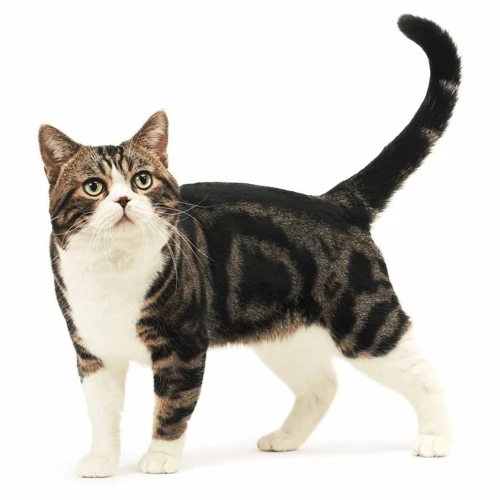
Toilet training your American Wirehair may seem like a tempting idea, but it’s not without its drawbacks. While some cat owners have great success with it, others may find that it’s simply not the right fit for their feline companion. As with any training method, there are pros and cons to consider. In this section, we’ll focus on the cons of toilet training your American Wirehair. It’s important to weigh these factors carefully before committing to this method of litter box elimination to ensure that you make the best decision for both you and your pet.
1. Time-consuming
Training your American Wirehair to use the toilet can be a time-consuming process. It requires patience, consistency, and dedication. You will need to spend time observing your cat and determining when they need to use the bathroom. Then, you will need to guide them towards the toilet and reinforce positive behavior.
However, the time investment can pay off in the long run. Once your cat is successfully trained to use the toilet, you will save time and money on cleaning up after them. No more messy litter boxes and no more scooping waste.
To make the process less time-consuming, consider using a special litter tray designed for toilet training. These trays are designed to gradually transition your cat from litter to the toilet, making the process less overwhelming for both you and your cat.
It is important to note that toilet training may not be suitable for all cats. Some cats may never be comfortable with the idea of using a toilet, while others may take longer to train. If you are having difficulty toilet training your American Wirehair or if they seem reluctant to use the toilet, consider seeking advice from a veterinarian or cat behaviorist.
While toilet training your American Wirehair may require a significant time investment, it can be a worthwhile endeavor in the long run. Just be prepared to put in the effort and to be patient with your cat throughout the training process.
2. Not all cats can be trained
While toilet training your American Wirehair cat might seem like a great idea, it’s important to understand that not all cats can be trained to use the toilet. Some cats simply refuse to use anything other than a litter box. Additionally, older cats may not be as receptive to toilet training and can become confused, leading to accidents outside the toilet bowl.
If you are determined to toilet train your American Wirehair, it’s important to understand that it may not work out and you should not force your cat to use the toilet. Pay close attention to your cat’s behavior during the training process, and if they seem uncomfortable or fearful, it’s best to stop.
If you’re unsure whether your American Wirehair is a good candidate for toilet training, talk to your veterinarian for advice. They may be able to offer insight into your cat’s personality and whether they’re likely to adapt to the change.
Keep in mind that if your cat is not trained to use the toilet, there are other options available. Investing in a high-quality litter box, such as the best litter box for American Wirehair cats, can help keep mess and odor to a minimum. Regular cleaning of the litter box, as outlined in our article on cleaning an American Wirehair litter box, can also help maintain a hygienic environment for your cat.
3. Unnatural for cats
One of the cons of toilet training your American Wirehair is that it may be unnatural for cats to use the toilet. Cats are instinctively attracted to litter boxes because they want to bury their waste, unlike dogs who are comfortable eliminating in open areas. It’s important to understand that toilet training your cat involves changing their natural behavior, and may take time for them to adapt to the new process.
Here are some points to consider about why toilet training may be unnatural for cats:
- Potty breaks: Cats are not accustomed to waiting in line to use the bathroom. They typically prefer to eliminate immediately after sensing the urge. However, toilet training teaches them to hold their waste until they are in the correct location. This can cause stress and discomfort for some cats, especially if they are not feeling well or are already anxious.
- Unfamiliarity with water: Toilet training requires your cat to use a water-filled bowl to eliminate. This may be scary or uncomfortable for some cats who are not used to standing on a slippery surface or being surrounded by water. As a result, they may resist learning how to use the toilet and try to avoid it.
- Preference for privacy: Cats enjoy privacy when using the litter box. However, when using the toilet, they may feel exposed or uncomfortable with the prospect of someone watching them while they eliminate. This may make it harder for them to use the toilet, and they may revert back to the litter box for privacy and comfort.
Despite these challenges, with the right training and patience, it is possible to train your American Wirehair to use the toilet successfully. It’s important to understand your cat’s personality and behavior to determine whether or not toilet training is the right choice for them.
Choosing Your Method
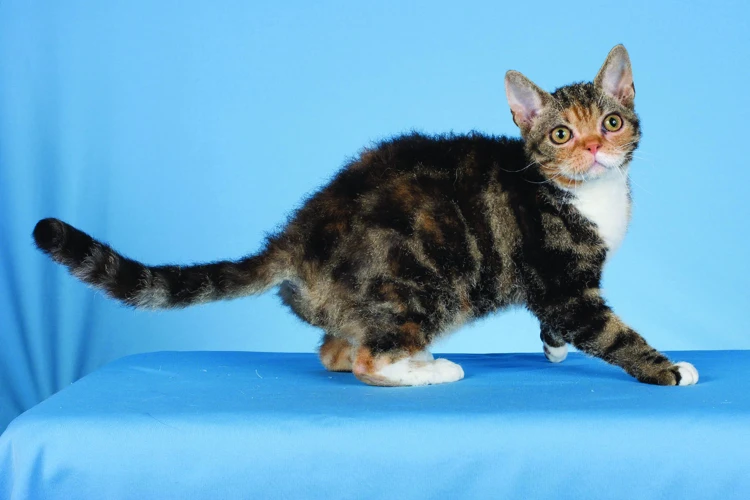
When embarking on toilet training your American Wirehair, choosing the right method can be a daunting task. There are different approaches to choose from, each with its own set of advantages and disadvantages. If you’re feeling unsure about which method to try, don’t worry! It’s common to feel a bit perplexed about making the right choice. In this section, we’ll explore some options and help you determine which might be the most suitable for you and your cat. Let’s dive in!
1. Gradual switching
One method for toilet training your American Wirehair is through gradual switching. This involves slowly introducing your cat to the idea of using the toilet instead of their litter box.
Here is a step-by-step guide for gradual switching:
| Step | Description |
|---|---|
| Step 1 | Place your cat’s litter box next to the toilet. |
| Step 2 | Gradually elevate the litter box to the level of the toilet using books or other sturdy objects. This allows your cat to get used to being at a higher level while using the litter box. |
| Step 3 | Place a special litter tray that fits over the toilet bowl on top of the books, with some litter in it. This will allow your cat to get used to the feel of the tray and being in a new location. |
| Step 4 | Once your cat is comfortable using the litter tray on top of the toilet, gradually reduce the amount of litter in the tray. Your cat will become more used to the feel of the toilet bowl under their paws. |
| Step 5 | Eventually, remove the litter tray altogether and your cat should become fully accustomed to using the toilet. |
This method allows your cat to adjust to the idea of using the toilet at their own pace. It also helps to prevent any accidents or fear that may occur from a sudden switch. However, it can be a slow process and requires patience and consistency from the cat owner. Keep in mind that not all cats may be able to adapt to using the toilet, so it’s important to monitor your cat’s behavior and progress throughout the training process.
2. Special litter tray
Some cat owners may opt for a special litter tray to train their American Wirehair to use the toilet. These trays are designed to fit over the rim of the toilet and gradually decrease in size, allowing the cat to get used to the feel of standing on the rim.
Pros:
- Easy transition: The special litter tray is a good option for owners who want to gradually transition their cat to using the toilet.
- Less mess: With the litter tray in place, there is less likelihood of litter scattered around the bathroom.
- Space saver: Using a special litter tray saves space by eliminating the need for a separate litter box.
Cons:
- Cost: These trays can be expensive, especially compared to a regular litter box.
- Dependency: Once the cat becomes accustomed to using the tray, it may be difficult to transition them to using the toilet without it.
- Cat preferences: Some cats may not like the feel of the tray or may have difficulty balancing on the rim.
A special litter tray can be a useful tool for training an American Wirehair to use the toilet. However, owners should take into consideration the higher cost and the possibility that the cat may become dependent on the tray. It is important to monitor the cat’s comfort level and make adjustments as needed.
3. Only for young cats
Training your American Wirehair to use the toilet is not possible for all cats, but it is a more feasible option for younger cats. While it’s possible to train cats of all ages, younger cats are generally more adaptable and able to learn new habits quickly and more effectively. If you have an older cat who has been using litter for a while, it may be difficult to transition them to the toilet. However, with patience and persistence, it’s still possible.
Here are some reasons why toilet training is better suited for younger cats:
- Health: Younger cats are generally healthier and more active, which means they can hold their bladder for longer periods. This makes it easier to train them to wait until they’re in the bathroom to do their business.
- Adaptability: Younger cats are still developing and more adaptable to new routines and habits. They are also generally more curious, which means they may be more willing to explore the bathroom and the toilet as a new place to do their business.
- Long-term habit: Starting toilet training with a young cat means they will develop the habit of using the toilet as their preferred place to do their business. This can save you a lot of money and hassle in the long run, instead of transitioning an older cat who is used to a litter box.
If you have an older cat, it’s still possible to toilet train them, but you’ll need to be prepared for a longer and more difficult transition process. Be patient, provide plenty of positive reinforcement, and offer lots of encouragement to make the process smoother.
Teaching Your American Wirehair
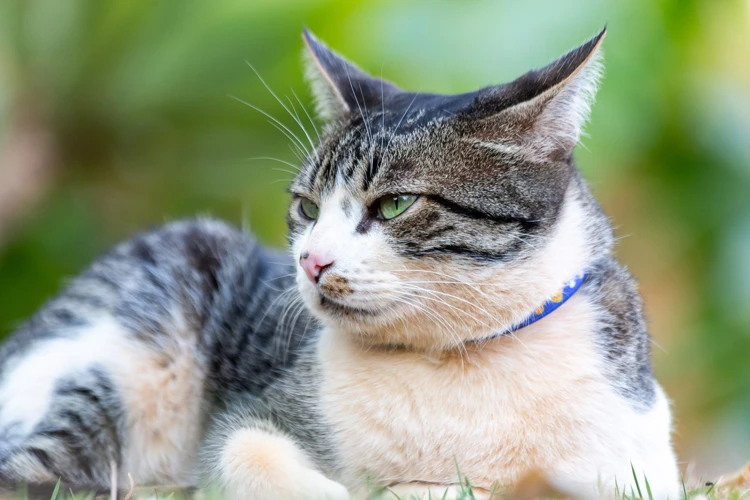
So, you’ve decided to toilet train your American Wirehair cat. Congratulations! Teaching your feline friend to do their business on the toilet instead of in a litter box can be a challenging but rewarding process. Now that you’ve chosen the method that works best for you, it’s time to start teaching your cat how to use the toilet. Let’s dive into the details of what you’ll need to do to successfully train your American Wirehair.
1. Choosing the right location
Choosing the right location
The first step in toilet training your American Wirehair is choosing the right location for the toilet. You want to pick a location that is easily accessible to your cat and also provides privacy. Here are some tips to consider when choosing the location:
| Location Tips | Explanation |
|---|---|
| A quiet and peaceful location | Cats prefer to use the toilet in a quiet and peaceful location without any distractions. |
| An easily accessible location | Cats are creatures of habit and prefer consistency. Choose a location that is easily accessible for your cat and consistent with their regular litter box location. |
| A location with good lighting | Make sure the location has good lighting so that your cat can see the toilet bowl easily and feel comfortable using it. |
| A location away from food and water | It’s important to choose a location that is far from your cat’s food and water bowls, as cats usually prefer to do their business away from their food and water sources. |
By following these simple tips, you can help ensure that your cat has a comfortable and stress-free experience while using the toilet. Remember to keep your cat’s preferences in mind and be patient as they adjust to their new toilet location.
2. Encouragement and reinforcement
Encouragement and reinforcement are important components of toilet training your American Wirehair. Positive reinforcement is key to helping your cat learn and understand what behavior is expected of them.
One way to encourage your cat is to use treats as a reward system. When your cat successfully uses the toilet, reward them with their favorite treat. This is a great way to associate the toilet with a positive experience.
In addition to treats, verbal praise can also be highly effective. Encourage your cat with words of praise and affection such as “good job!” or “clever kitty!”.
Using a spray bottle to gently spritz your cat with water can be an effective way to discourage undesirable behavior. However, it’s important to never use physical punishment or harsh language as this can lead to fear and anxiety in your cat.
Toilet training your American Wirehair can be a long process, so remember to always remain patient. Avoid using any negative reinforcement as it only discourages learning and can have a detrimental effect on your cat’s health and well-being.
Finally, always reinforce positive behavior immediately, and never punish your cat for accidents or mistakes. By using positive reinforcement and encouragement, your American Wirehair will soon learn that using the toilet is the desired behavior.
Table: Encouragement and Reinforcement Tips
| Encouragement and Reinforcement Tips | |
|---|---|
| Use treats as a reward system | ✔️ |
| Give verbal praise and affection | ✔️ |
| Spritz with water as a gentle deterrent | ✔️ |
| Avoid negative reinforcement or punishment | ❌ |
| Reinforce positive behavior immediately | ✔️ |
3. Patience and consistency
When it comes to toilet training your American Wirehair, patience and consistency are key. It is important to remember that cats are creatures of habit and may take some time to get used to using the toilet instead of a litter box. Here are some tips to help you stay patient and consistent during the training process:
| Tip | Description |
|---|---|
| Stick to a routine | Try to keep training sessions at the same time every day. This will help your cat get used to the routine and make it easier for them to learn. |
| Don’t punish your cat | If your cat has an accident or doesn’t use the toilet, don’t punish them. This can cause fear and anxiety and make them less likely to learn. |
| Keep the environment consistent | Try to keep the toilet training environment as consistent as possible. Avoid moving the litter tray or changing the type of litter too frequently as this can confuse your cat. |
| Reward good behavior | When your cat successfully uses the toilet, give them plenty of praise and a treat. This will encourage them to continue using the toilet and associate it with positive experiences. |
| Be patient | Remember that toilet training your American Wirehair may take some time. Don’t get discouraged if your cat doesn’t learn right away, and be patient as you continue to work with them. |
By following these tips and staying patient and consistent, you can help your American Wirehair learn to use the toilet successfully and avoid any accidents or issues.
Common Problems and Solutions

Toilet training your American Wirehair can be a challenging process, and it’s not uncommon to encounter some obstacles along the way. However, with perseverance and the right strategies, these problems can be overcome. In this section, we’ll address some of the most common difficulties that can arise during toilet training, as well as provide effective solutions to help you and your feline companion succeed in this endeavor. Let’s dive into the grit of the matter and find out how to handle these issues like a pro.
1. Accidents outside the toilet bowl
Cats, even when trained, can still have accidents outside of the toilet bowl. This can be frustrating for the owner, but it is important to remain patient and understand that accidents can happen. Here are some potential solutions to common toilet training accidents:
| Problem | Solution |
|---|---|
| Cat misses the toilet bowl | Try moving the litter tray closer to the toilet. If the cat is still having trouble, try using a larger litter tray or a special training seat that fits onto the toilet bowl. Reward the cat when they successfully use the toilet. |
| Cat does not cover their waste | Some cats may not cover their waste with litter even when using the toilet. This may be due to the litter type or consistency. Try a different type of litter and supervise the cat during their toilet activities. Praise and reward them when they cover their waste. |
| Cat has accidents outside of the toilet area | If the cat is having accidents outside of the toilet area, it may be a sign that they are not fully comfortable with the toilet training process. Try increasing the number of litter trays available and gradually moving them towards the toilet. Clean any accidents thoroughly to remove the scent and avoid repeating the behavior. |
Remember, each cat is different and may require unique solutions to their toilet training accidents. It is also important to never punish your cat for accidents, as this can lead to anxiety and disrupt their training progress. Stay patient and consistent with your training methods, and your American Wirehair will eventually become a toilet-trained feline.
2. Fear or reluctance to use the toilet
Teaching your American Wirehair to use the toilet can be a challenging and time-consuming process, and one common problem that may arise is fear or reluctance to use the toilet. This can be caused by a variety of reasons, such as previous negative experiences with the toilet or a fear of falling in.
Causes of Fear or Reluctance to Use the Toilet
| Causes | Solutions |
|---|---|
| Previous Negative Experiences | Provide positive reinforcement for using the toilet, such as treats or praise. Gradually reintroduce the cate to the toilet training process with patience and consistency. |
| Fear of Falling In | Provide a stable and secure toilet seat for your cat that won’t slip or wobble. Use a litter tray or a small platform within the toilet bowl to give your cat a sense of security. |
| Unfamiliarity with the Toilet | Introduce your cat to the toilet gradually and patiently, starting with simple exercises such as sitting on the toilet seat and getting used to the surroundings. Provide plenty of positive reinforcement and encourage your cat every step of the way. |
Solutions for Fear or Reluctance to Use the Toilet
To overcome your American Wirehair’s fear or reluctance to use the toilet, it’s important to understand the cause of the issue and find a solution that works best for your cat.
One common cause of fear or reluctance is previous negative experiences with the toilet. This can be due to a variety of factors, such as falling in or becoming frightened by loud noises or unfamiliar surroundings. To overcome this, provide positive reinforcement for using the toilet, such as treats or praise. Gradually reintroduce your cat to the toilet training process with patience and consistency, starting with simple exercises such as sitting on the toilet seat and getting used to the surroundings.
Another cause of fear or reluctance is a fear of falling in. To address this, provide a stable and secure toilet seat for your cat that won’t slip or wobble. Use a litter tray or a small platform within the toilet bowl to give your cat a sense of security and increase their confidence in using the toilet.
Finally, some cats may be hesitant to use the toilet simply because it’s unfamiliar to them. To help your cat adjust to the toilet, introduce them to it gradually and patiently, starting with simple exercises and providing plenty of positive reinforcement along the way. With time, patience, and consistency, you can help your American Wirehair overcome any fear or reluctance to use the toilet and enjoy the benefits of toilet training.
3. Transition to a new home
Transition to a New Home:
Moving to a new home can be stressful for cats, and it can disrupt their toilet training progress. It’s important to take certain steps to ensure a smooth transition and prevent accidents.
| Step | Description |
| 1. Set up the toilet area | Before your American Wirehair arrives in the new home, set up their toilet area in a quiet and easily accessible spot similar to the previous place. Use the same litter tray and gradually change it to the toilet set up. |
| 2. Restrict access | Limit your cat’s access to the rest of the house for the first few days or even totally keep her confined to one room until she gets familiarized with a new environment. This will give her less room to wander and more opportunity to focus on getting used to the new toilet area. |
| 3. Start over with training | Start toilet training American Wirehair all over again as if it was their first day of training. Make sure to supervise and provide encouragement as with initial training and keep the routine intact. |
| 4. Reward for progress | Give plenty of praise, attention, and rewards when your American Wirehair makes any progress towards using the toilet in the new home. This will reinforce the positive behavior and motivation to continue training. |
| 5. Monitor closely | During the first few weeks in a new home, closely monitor your American Wirehair’s toilet habits and behavior, and be prepared to intervene and offer guidance if necessary. |
By following these steps, you can help your American Wirehair ease into their new environment and maintain their toilet training progress with minimal setbacks. Remember to be patient and consistent with the training, and your cat will eventually adapt to the new home and new toilet routine.
Tips for Success
When it comes to toilet training your American Wirehair, there are a few key tips that can make all the difference in the success of your efforts. These methods require patience and consistency, but with the right approach, your cat may learn to use the toilet in no time. Here are some important tips to keep in mind as you work towards success. By implementing these strategies, you may be able to avoid some of the common pitfalls and help your feline friend master this unique skill.
1. Start young
Starting toilet training as early as possible is a key factor in success. It is recommended to start training your American Wirehair when they are still kittens, ideally around 12 weeks old. Kittens are more adaptable and less set in their ways, making training easier and faster.
To further emphasize the importance of starting young, here’s a breakdown of the advantages and disadvantages of training your American Wirehair at different ages:
| Advantages | Disadvantages | |
|---|---|---|
| Kitten (12-16 weeks old) | Highly adaptable, no preconceived litter box preference | Not fully vaccinated, still learning basic behaviors and social skills |
| Adolescent (4-6 months old) | Developed immune system, basic behaviors and social skills acquired | Might have already developed a litter box preference |
| Adult (1 year or older) | Matured immune system, fully developed behaviors and social skills | Likely have established a litter box preference, might be less adaptable |
As shown in the table, kittens have the most advantages when it comes to toilet training. However, it’s not too late to train an older American Wirehair. It might just take longer and require more patience and consistency.
Remember, toilet training your American Wirehair requires time, effort, and dedication from both you and your cat. But with the right approach and starting young, it can be a rewarding experience that saves you time, money, and hassle in the long run.
2. Use positive reinforcement
One of the most important aspects of toilet training your American Wirehair is using positive reinforcement. This means rewarding good behavior with treats, petting, and encouragement, rather than punishing bad behavior. Punishing your cat could lead to anxiety, fear, and avoidance of the litter box altogether.
To effectively use positive reinforcement, follow these steps:
1. Identify your cat’s preferred rewards
Some cats respond better to treats, while others may prefer playtime or attention from their owners. Figure out what your American Wirehair enjoys the most and use that as a reward when they display good toileting behavior.
2. Be consistent
Use positive reinforcement every time your cat uses the toilet correctly. This will reinforce the desired behavior and encourage your cat to repeat it in the future.
3. Use a clicker
Clicker training is a popular method of positive reinforcement. Click the clicker when your cat uses the toilet correctly and then immediately reward them with their preferred treat or reward.
4. Avoid punishment
As mentioned earlier, punishment should be avoided when trying to train your cat to use the toilet. Cats who are punished may begin to associate the litter box or toilet with fear and anxiety, leading to other behavior problems.
By using positive reinforcement consistently, your American Wirehair will begin to associate using the toilet with pleasant rewards and will be more likely to repeat the behavior in the future. Remember to be patient and persistent in your training efforts and always reward good behavior.
3. Be patient
Training your American Wirehair to use the toilet can be a challenging process, and it’s essential to keep in mind that cats are independent animals with their own unique personalities. Thus, it’s crucial to be patient throughout the training process and not expect immediate results.
Here are some tips to help you stay patient during the training process:
- Set realistic expectations: It’s essential to have a reasonable timeline for your cat to become fully toilet trained. While some cats may learn quickly, others may take longer to adjust to the new routine. Patience is key.
- Recognize progress: Instead of focusing solely on the end goal of a fully trained cat, try to acknowledge and celebrate every small step that your American Wirehair takes towards success. This will help you stay motivated and keep you from becoming discouraged during the process.
- Stay calm: Cats are sensitive creatures and can quickly pick up on any negative energy or frustration from their owners. Thus, it’s essential to approach the training process with a calm and positive attitude and refrain from getting angry or upset when accidents happen.
- Offer positive reinforcement: Remember always to praise your American Wirehair for any progress they make during the training process. Positive reinforcement in the form of treats or verbal praise can go a long way to help train your cat.
Keep in mind that training your American Wirehair to use the toilet is a process that requires patience, consistency, and effort. Don’t give up even if progress seems slow, and always remember that your cat is an individual with their own unique personality and learning pace. By staying patient and positive, you’ll be able to successfully train your American Wirehair to use the toilet and ensure a clean and odorless home.
Conclusion
In conclusion, toilet training your American Wirehair can be a time-consuming and somewhat challenging process, but the benefits can be well worth the effort. By switching to toilet training, you can save a significant amount of money on litter and avoid litter mess and odor in your home. However, it’s important to keep in mind that not all cats are trainable, and some may find it unnatural or difficult to use the toilet.
When choosing your method, consider gradual switching, using a special litter tray, or focusing on toilet training for younger cats. Once you’ve decided on a method, it’s important to choose the right location for the toilet and provide positive encouragement and reinforcement for your cat.
Despite your best efforts, there may be some common problems that arise during the toilet training process, such as accidents outside the toilet bowl or fear and reluctance to use the toilet. However, with patience and consistency, these issues can typically be overcome.
To increase your chances of success with toilet training, it’s recommended to start young, use positive reinforcement, and remain patient throughout the process. With persistence and a bit of hard work, you can successfully train your American Wirehair to use the toilet.
In the end, the decision to toilet train your cat is a personal one, and should be based on your unique situation and preferences. If you have the time and patience to invest in toilet training, the benefits can be long-lasting and significant.
Frequently Asked Questions
1. Can all cats be toilet trained?
No, not all cats are able to be toilet trained. Some cats will refuse to use the toilet, even after extensive training. It ultimately depends on the individual cat’s personality and willingness to learn.
2. Is toilet training a healthy option for cats?
Yes, toilet training can be a healthy option for cats as long as it is done properly. It can help reduce litter-related health problems and provide a cleaner environment for both the cat and their owner.
3. Is toilet training time-consuming?
Yes, toilet training requires time and patience. It is important to remember that every cat learns at their own pace and it may take several weeks or even months to train them properly.
4. Will my cat still need a litter box after toilet training?
If your cat is successfully trained to use the toilet, then they will no longer need a litter box. However, it is important to keep a litter box available as a backup in case of any accidents or difficulties with the toilet training.
5. Can senior cats be toilet trained?
Yes, senior cats can be toilet trained, but it may take longer and require more patience than training a younger cat. It is important to take their age and physical abilities into consideration when choosing a toilet training method.
6. Should I use treats to encourage my cat to use the toilet?
Yes, using treats can be an effective way to encourage your cat to use the toilet. However, it is important to use them in moderation and to not rely solely on treats as a means of motivation.
7. Can multiple cats be toilet trained at the same time?
Yes, multiple cats can be toilet trained at the same time. However, it is important to provide each cat with their own designated toilet space to prevent any territorial issues or confusion.
8. Do I need a special toilet seat for my cat?
Yes, a special toilet seat designed for cats can be helpful in toilet training. These seats are typically smaller and have a more gradual slope to help make it easier for your cat to access and balance on the toilet.
9. Can I switch from a regular litter box to toilet training midlife?
Yes, you can switch from a regular litter box to toilet training at any time. However, it is important to be patient and ease your cat into the new routine to help prevent any confusion or stress.
10. Will my cat ever have accidents after being successfully toilet trained?
It is possible for cats to have accidents even after being successfully toilet trained. It is important to continue monitoring your cat’s behavior and provide a litter box as a backup in case of any accidents or difficulties.

